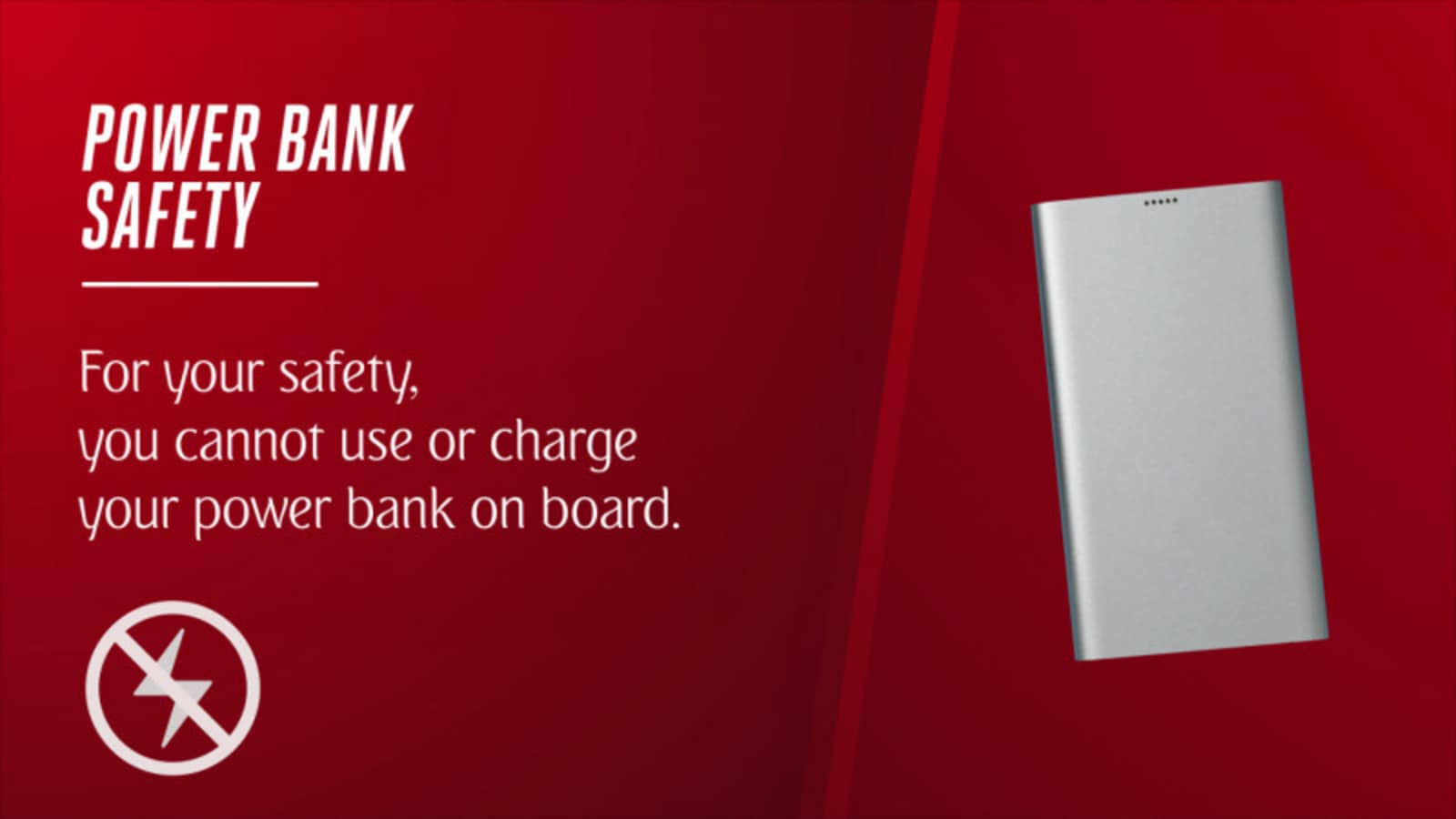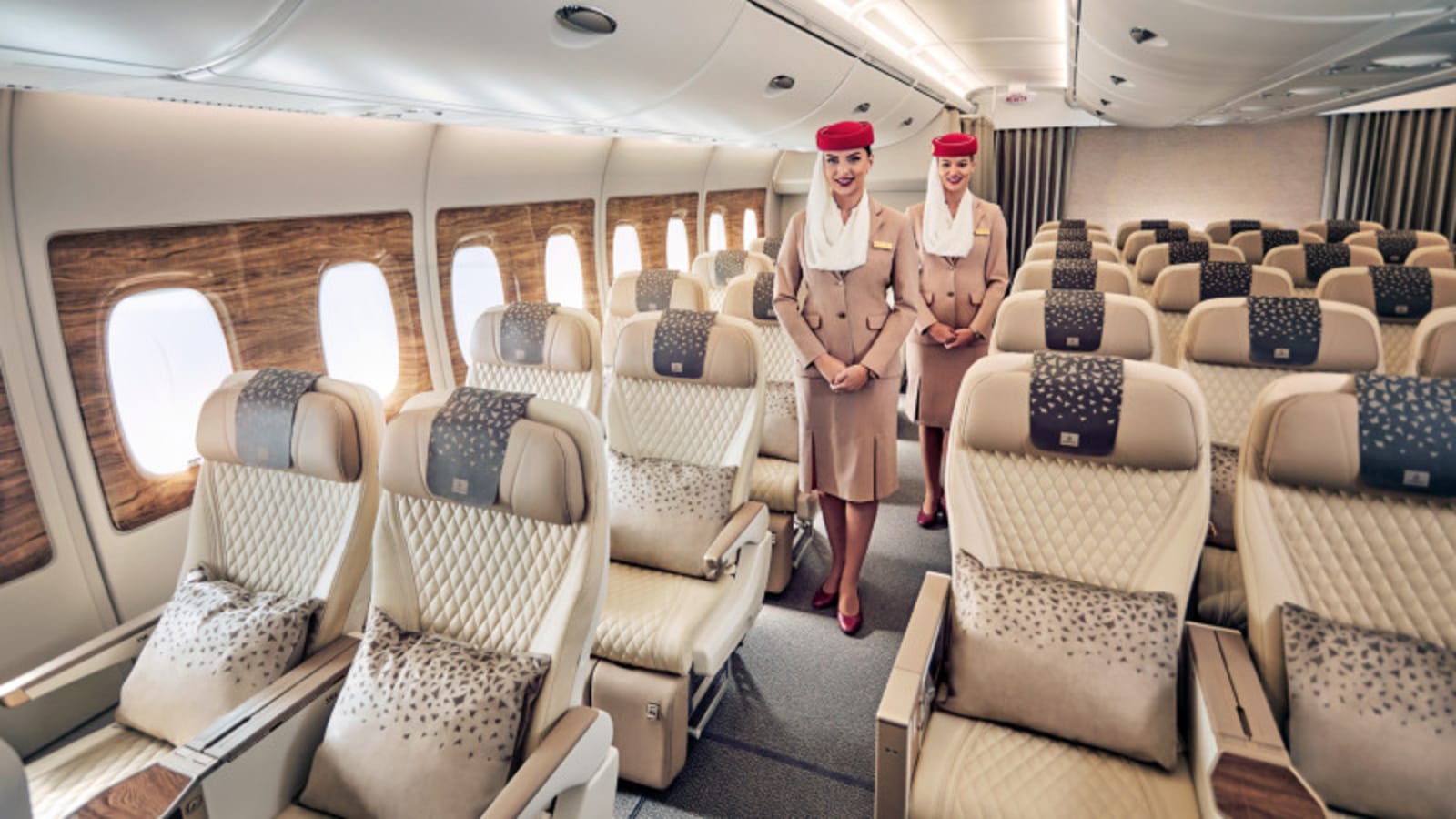Emirates, the UAE’s national carrier, has announced a new safety measure prohibiting the use of power banks onboard its flights, effective Wednesday, October 1, 2025.
Under the new regulation, passengers may carry one power bank under 100 watt-hours in their cabin baggage, but the device must remain unused throughout the flight. This means travellers cannot use power banks to charge their electronic devices such as smartphones and tablets nor can they recharge the power banks using the aircraft’s in-seat power supply.

“After a comprehensive safety review, Emirates is taking a firm and proactive stance to mitigate risk when it comes to power banks onboard. There has been a significant growth in customers using power banks in recent years, resulting in an increasing number of lithium battery-related incidents onboard flights across the wider aviation industry,” the airlines said in a statement.
Emirates noted that all accepted power banks must display clear capacity ratings and should be stored only in the seat pocket or under the seat in front, not in the overhead compartments. The airline also mentioned that, while its aircraft are equipped with in-seat charging ports, travellers should fully charge their devices before flying, especially on long-haul journeys.
What are power banks, and what are they used for?
Power banks are pocket-sized cuboid plugs used to charge small gadgets such as smartphones, smartwatches, and tablets. Most people carry power banks with them these days, as they offer peace of mind when a device runs out of battery, especially while travelling. While they are primarily designed for charging smaller gadgets, some models can also power more demanding devices such as laptops and large portable speakers. However, since they typically use lithium-ion or lithium-polymer batteries, they can pose fire hazards if damaged or overcharged.
 You will still be permitted to carry one power bank on board with specific conditions. (Image credit: Emirates)
You will still be permitted to carry one power bank on board with specific conditions. (Image credit: Emirates)
What are the current rules for carrying power banks on planes?
There have been certain rules in place for years regarding flying with power banks. First, power banks must be carried in your carry-on baggage; they are not allowed in checked luggage that goes into the hold. Second, power banks must not exceed 100 watt-hours (Wh), which is equivalent to 27,000 milliamp-hours (mAh). Watt-hours can be calculated using the formula: Wh = V × Ah (voltage × amp-hours). Emirates’ new rules specifically mention that passengers can carry one power bank, but it must be under 100 watt-hours.
Some airlines may allow power banks up to 160 Wh, but typically only with prior approval. Power banks that exceed 160 Wh are not permitted on flights. In fact, the Federal Aviation Administration (FAA) and the Transportation Security Administration (TSA) in the US and the Civil Aviation Authority (CAA) in the UK, the International Air Transport Association (IATA), and many other regulatory bodies around the world agree on these rules. However, individual airlines may enforce additional restrictions if necessary.
Story continues below this ad
How many power banks or batteries can I carry on the plane?
The rules may vary. The IATA states that you can carry up to 20 spare batteries or power banks, but they must be in your carry-on and each must be under 100 Wh. You can carry up to two 160-Wh power banks or batteries with prior approval. However, individual airlines may have stricter rules.
In fact, there are additional rules in place. For example, when batteries are inside devices (phones, laptops or medical devices), they are allowed in checked baggage, provided the devices are completely turned off, not in standby or hibernation mode. The IATA states that you can take up to 15 portable electronic devices on flights in both your checked and carry-on luggage. As mentioned earlier, airlines may have their own rules regarding this.
Is it fine if I use a power bank on a plane?
That depends on the airline you are flying with. There is no general rule prohibiting the use of power banks on flights. However, Emirates’ new rules clearly state that power banks cannot be used to charge devices onboard, and passengers cannot recharge power banks using the aircraft’s power supply. Other airlines may have different rules in place. If you are using a power bank on a flight and it shows any signs of overheating (such as emitting smoke or swelling), you should stop using it immediately and alert a flight attendant.
 Emirates is not the first airline to introduce strict power bank rules. (Image credit: Emirates)
Emirates is not the first airline to introduce strict power bank rules. (Image credit: Emirates)
Which airlines have strict power bank rules in place?
It is always recommended to check the power bank rules before you travel. In fact, airline websites and apps usually provide a breakdown of their policies on power banks.
Story continues below this ad
Here are some airlines that have introduced stricter power bank rules in recent months: Southwest Airlines, Cathay Pacific, China Airlines, Emirates, EVA Air, Singapore Airlines, South Korean Airlines, and Thai Airways.
Tips for you, in case you carry power banks on the flight
If you are planning to board a flight soon, make sure power banks are for personal use and do not show any signs of damage (such as swelling or defects).
Also, ensure the power bank you are carrying doesn’t exceed 100 Wh.
Always fully charge your power banks and smart gadgets before you leave the house, or use the outlets at the airport to charge devices such as smartphones.



 You will still be permitted to carry one power bank on board with specific conditions. (Image credit: Emirates)
You will still be permitted to carry one power bank on board with specific conditions. (Image credit: Emirates) Emirates is not the first airline to introduce strict power bank rules. (Image credit: Emirates)
Emirates is not the first airline to introduce strict power bank rules. (Image credit: Emirates)





